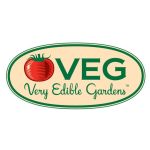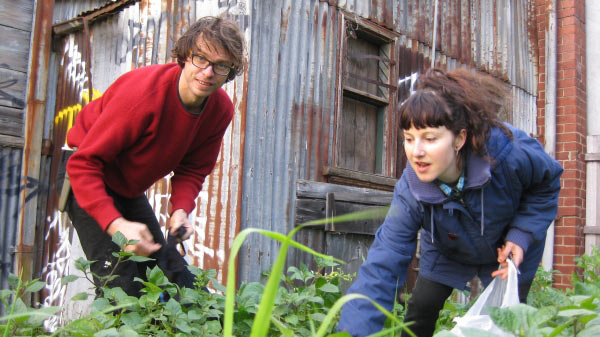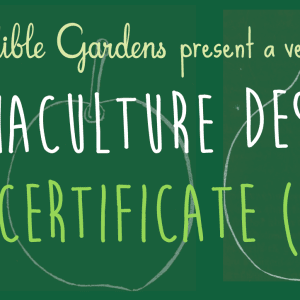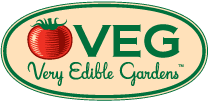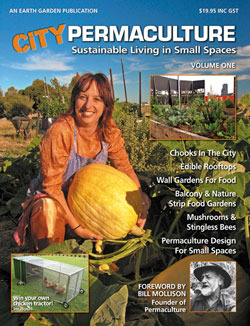 A lot of people are talking about this great new publication from Earthgarden, CITY PERMACULTURE Volume 1. It includes a feature article by Adam from VEG, and lots of other great articles.
A lot of people are talking about this great new publication from Earthgarden, CITY PERMACULTURE Volume 1. It includes a feature article by Adam from VEG, and lots of other great articles.
From the publisher:
“Have you ever wanted to keep chooks, grow some of your own food, bake your own bread or harvest your own rainwater . . . but assumed that was only for people with large blocks of land? Think again: city living and city growing are perfectly compatible, with ‘City Permaculture’ to guide you along the path to urban sustainability. Learn how to choose the right species to plant, the right time of year to plant food, how to prepare your courtyard, balcony or even nature strip so you can enjoy the buzz of growing your own food. You don’t need to go bush to enjoy the delights of collecting your own chook eggs. ‘City Permaculture’ is packed with real life information from urbanites living the good life in the middle of town. Instead of reading the theory of how to do it, why not read about the real and practical experiences of people who are at it right now? Once you get the city permaculture bug, the sky’s the limit.”
Here’s the start of Adam’s article…
A new suburban dream. Reflections on permaculture design experience in the city.
Adam Grubb
American commentator James Howard Kunstler has called the suburbs of the western world the ‘greatest misallocation of resources in human history’. But for whatever other challenges they present, socially and environmentally, the suburbs do, at least, have yards. As permaculture co-originator David Holmgren has pointed out, the suburbs have roughly the population density of some agrarian south-east asian societies, which provide for almost all their own needs. While much of our growing surfaces are paved or covered by buildings, in a dryer climate like Australia, this can be to our advantage – it allows us to focus the water resources where they are most needed. The city draws in huge quantities of organic matter and with them the potential of building extremely rich soils, perfect for food production.
Personal, professional and community experience has shown me that highly productive, beautiful and edible gardens can be created in ways that improve health and lifestyle, reduce food bills, build better suburban community, local resiliency, and begin to provide working models of a future low resource-use suburbia.
Read the rest and lots of other great articles in CITY PERMACULTURE Volume 1
